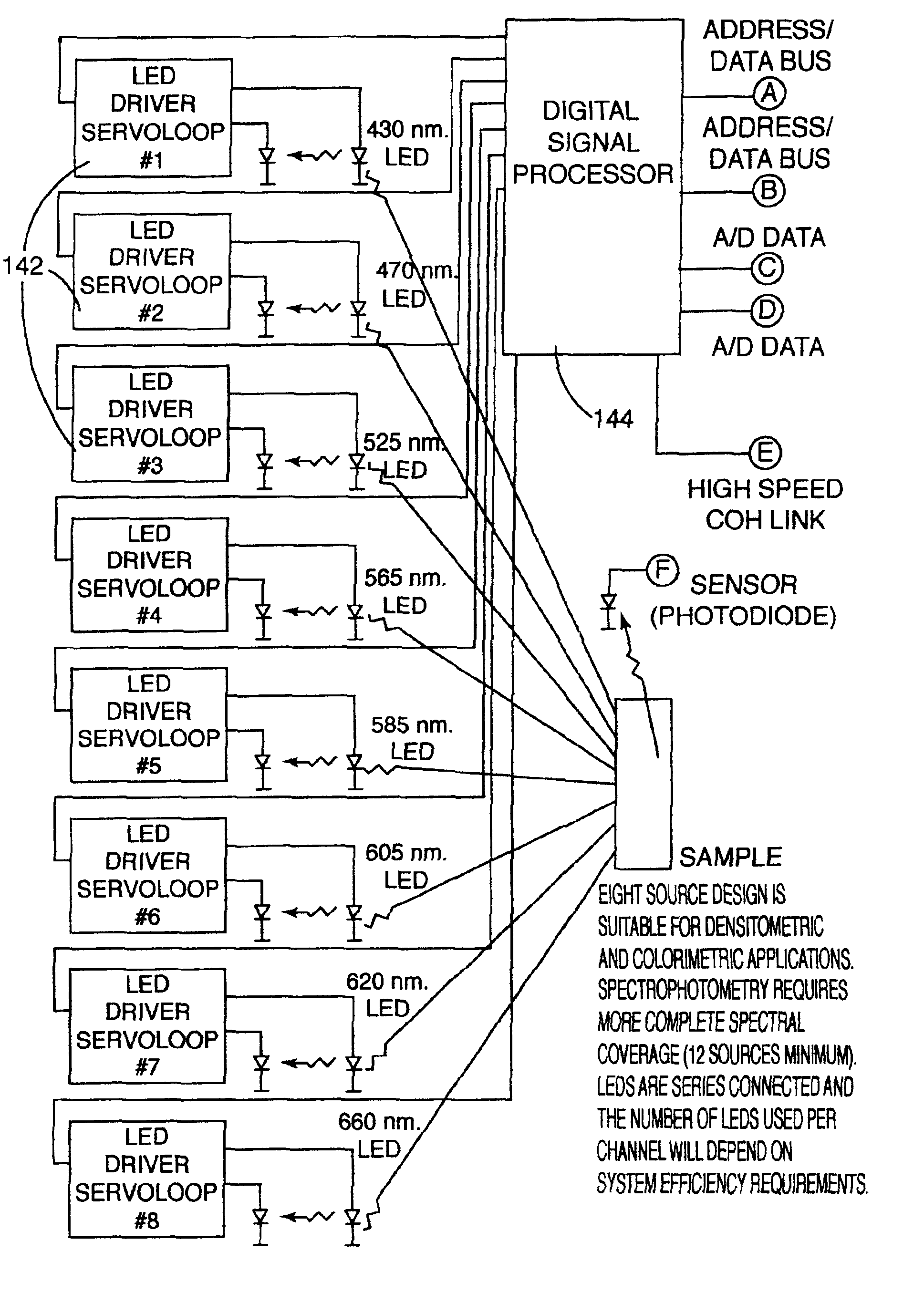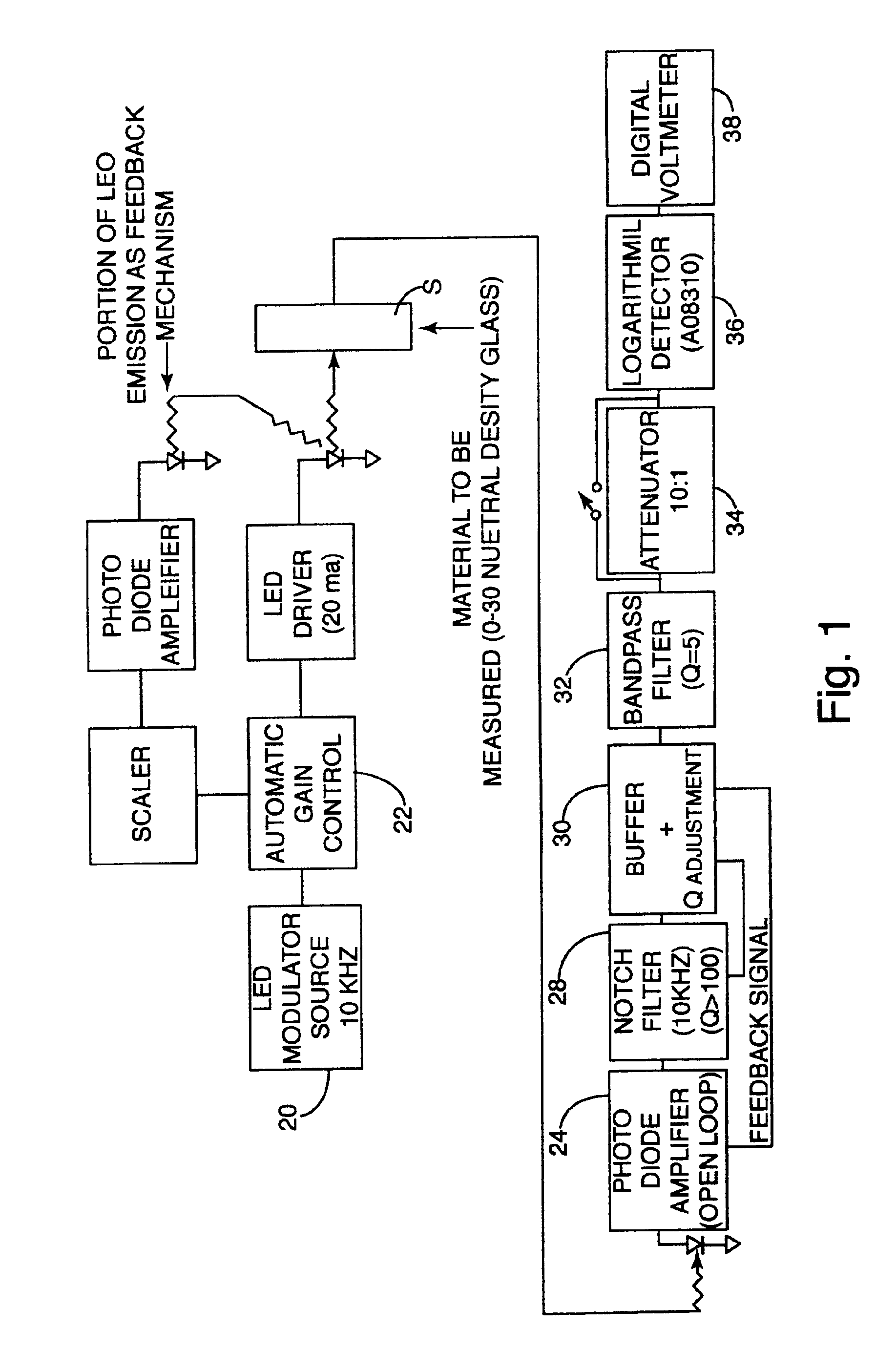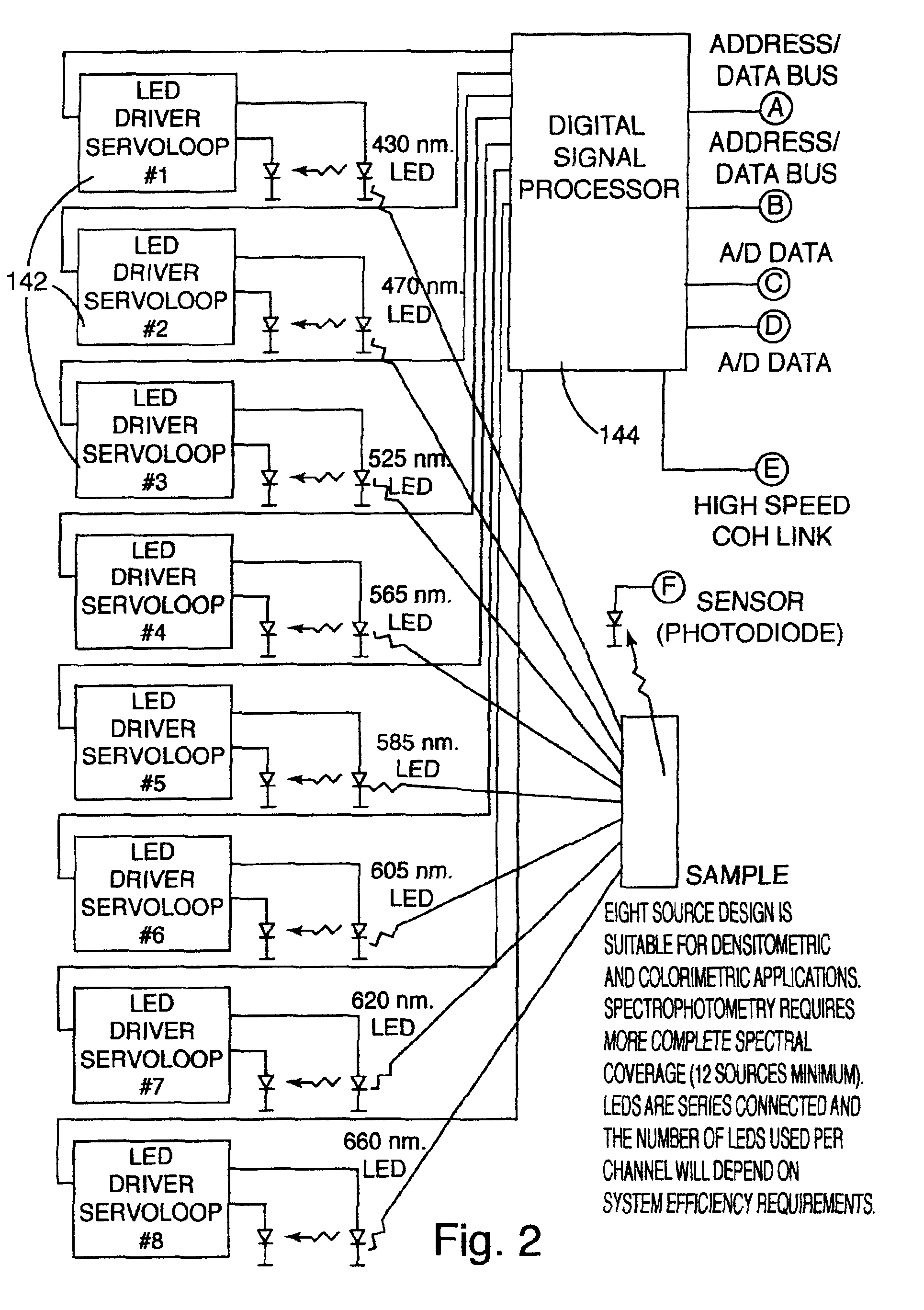Color measurement instrument with modulated illumination
a color measurement and modulation technology, applied in instruments, spectrometry/spectrophotometry/monochromators, optical radiation measurement, etc., can solve the problems of unsatisfactory application cannot relax the requirement of environmental robustness, simplicity and reliability, etc., to achieve effective modulation, effective illumination, and simple
- Summary
- Abstract
- Description
- Claims
- Application Information
AI Technical Summary
Benefits of technology
Problems solved by technology
Method used
Image
Examples
experiment 1
II. Experiment 1
[0025]In Experiment 1, circuitry was developed to demonstrate the advantages of using a current modulated LED as a light source and combining that light source with frequency selective detection / amplification. The goal was to verify that modulated LED light could be measured in ambient light conditions with a dynamic range of three to four decades. FIG. 1 shows a block diagram of Experiment 1. The LED light source was a 520 nanometer (nm) green LED, which was chosen because its peak wavelength was close to the peak sensitivity of the human eye and because green LEDs represent the middle of the road in terms of LED efficiency (reds are more efficient while blues are less efficient). The LED was current modulated by making it, with a current limiting resistor, the load in a voltage controlled current sink (VCCS). The LED was operated at a nominal 20 milli-amperes DC, which is the ideal operation point for most LEDs in a 5 mm. package. A 10 kHz sine wave modulator 20 wa...
experiment 2
IV. Experiment 2
[0048]Experiment 2 tested the various components of a MLSA design. FIG. 4 shows a block diagram of Experiment 2. The first step was to design an LED servo that is simple, stable, and accurate at 100 KHz and a high speed photodiode detector / amplifier circuit. FIG. 5 shows a schematic of experimental circuits. Designing the detector / amplifier circuitry was challenging because of the effect of photodiode capacitance, which must be minimized if frequency response is to be maximized. The best or most cost-effective solution appeared to be a combination of a number of techniques such as reverse biasing the photodiode to reduce photodiode capacitance, bootstrapping the photodiode to reduce the effect of photodiode capacitance, selecting an optimal operational amplifier with reduced capacitance at the amplifier inputs, and incorporating a cascode (common base transistor) amplifier between the photodiode and trans-impedance amplifier to swamp out the photodiode capacitance. C...
PUM
 Login to View More
Login to View More Abstract
Description
Claims
Application Information
 Login to View More
Login to View More - R&D
- Intellectual Property
- Life Sciences
- Materials
- Tech Scout
- Unparalleled Data Quality
- Higher Quality Content
- 60% Fewer Hallucinations
Browse by: Latest US Patents, China's latest patents, Technical Efficacy Thesaurus, Application Domain, Technology Topic, Popular Technical Reports.
© 2025 PatSnap. All rights reserved.Legal|Privacy policy|Modern Slavery Act Transparency Statement|Sitemap|About US| Contact US: help@patsnap.com



